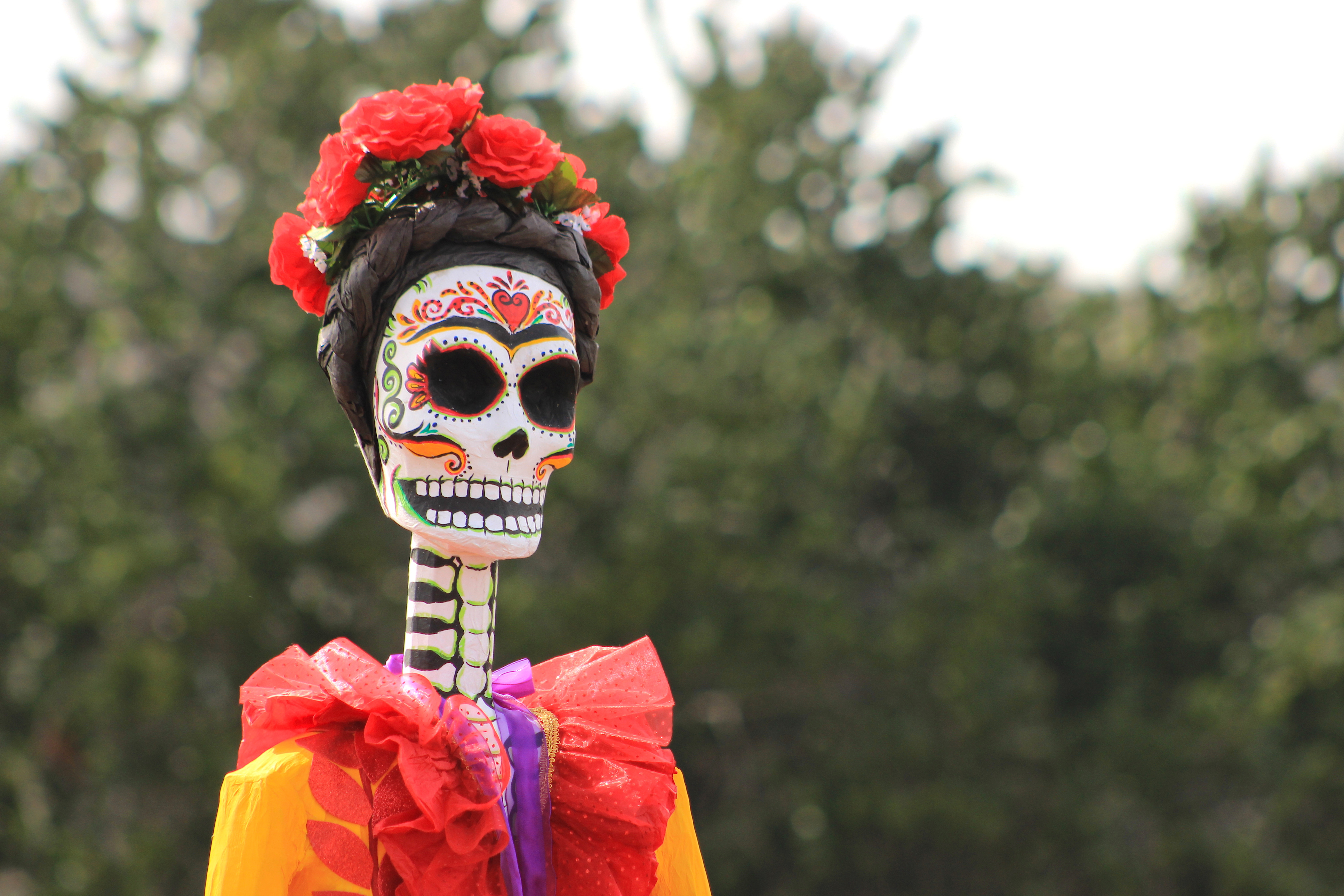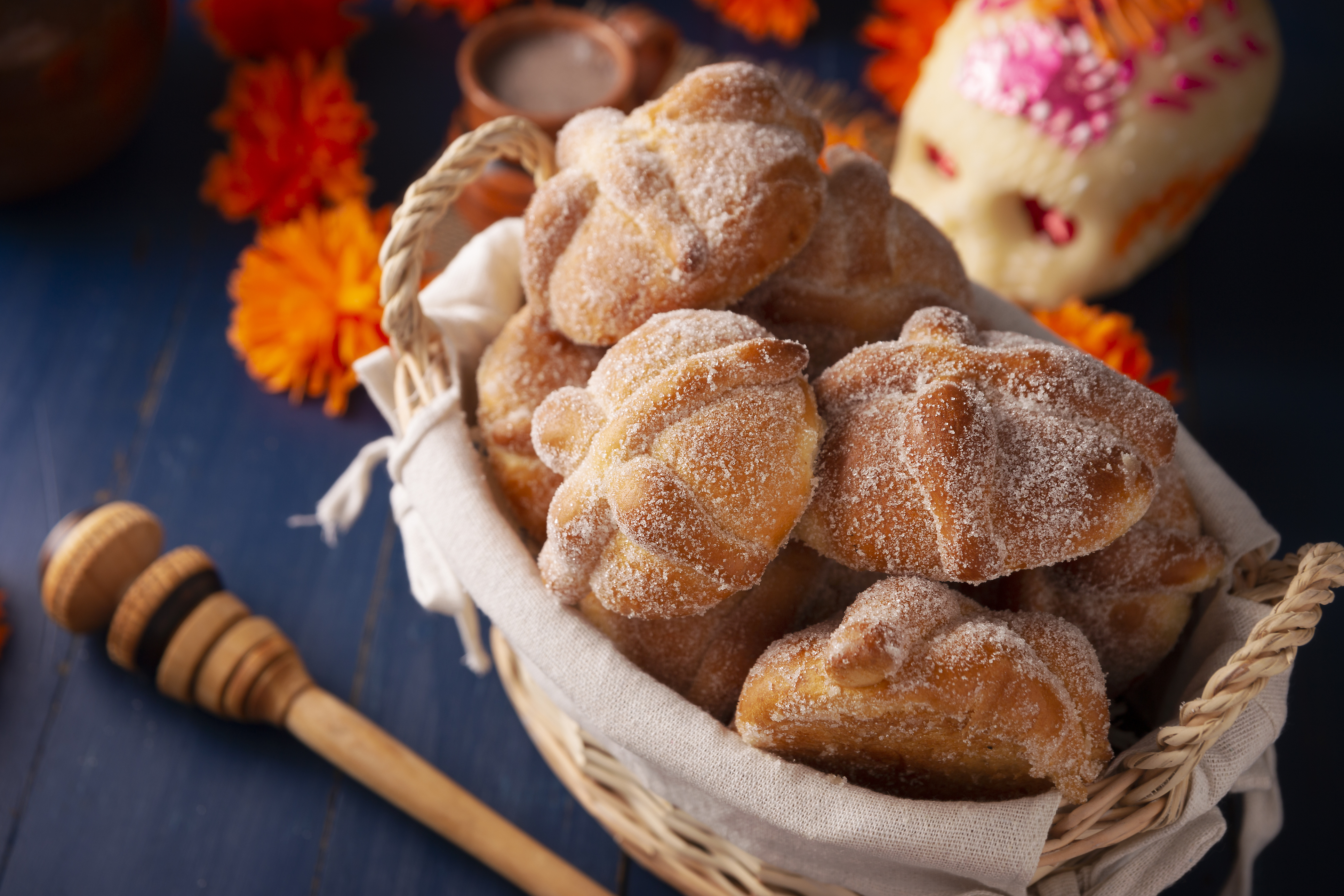Every society faces death in slightly or greatly different ways, but the Mexicans have an especially unique way of approaching it.
For example, how would you like to celebrate the return of one of your loved ones to the world of the living? Here one of the most popular holidays is the Día de los Muertos (Day of the Dead) on 1 November, when it’s said that is indeed what happens, for one night.This is a holiday that derives from European Catholic traditions, what we know today as All Saints’ Day as well as from Aztec rituals honouring the deceased. The belief is that they wake up from their eternal sleep and through a series of offerings reunite with their families and friends. It’s a way of approaching death with love, respect, and even joy, recognising it as a key part of the human experience.
And although it’s called “Day” of the Dead, it’s actually a couple of days or so, running from the night of Halloween, 31 October, through 2 November, and with all the ingredients of a fiesta: light, colour, and mariachi music. And while it’s celebrated all over the country, where you can witness it at its peak intensity is in downtown Mexico City, where locals start preparing throughout the month of October. You’ll also find a lot of similar references during this month’s annual Carnival celebrations.
But regardless of when you can visit, you can find symbols of death any time of year almost anywhere in Mexico, since it’s an integral part of daily life for many here. For example:

The ‘Elegant Skull’ of Catrina
The country’s most widely recognised image was created by in 1910-13 by artist José Guadalupe Posada, who made death one of his recurring themes and created a series of illustrations focussing on a skeleton elegantly attired in the overdone upper-class finery of the Porfiriato (the 33-year dictatorship[of General Porfirio Díaz). Catrina’s outfit is made up of two essential garments: a corset or camisole and a skirt adorned with layers of numerous embroideries and decorations, all in red, black, and white.
The Traditional Altar
Perhaps the most important, since it’s viewed as a way to honour those who have shuffled off this mortal coil for to make them to feel comfortable paying the living a visit. Families create them inside their homes, on graves in cemeteries, and also in public places. They’re carefully decorated with very colourful details and in order to give the deceased as good a welcome as possible, they usually include the deceased’s favourite foods, personal items, and photographs, along with skulls, flowers, and incense.
The Flower of Cempasúchil
Annually in mid to late October (just in time for All Saints Day!) the marigold blossoms and tints much of Mexico in orange. Rooted in a legend of Aztec lovers, symbolically they represent the impermanence and fragility of life and are used to adorn graves and arranged in elaborate designs.

Funereal Sweets
Pan de muerto (bread of the dead) is of course one favourite treat on the Day of the Dead, a sugar-dusted bun decorated with skulls and crossbones. Another is colourfully decorated sugar skulls, little folk-art masterpieces often placed on the aforementioned altars to represent departed souls. There are some versions meant to be eaten, others which are just decorative.
Dying to experience this and other aspects of Mexican culture? Book at flight to Mexico now!

